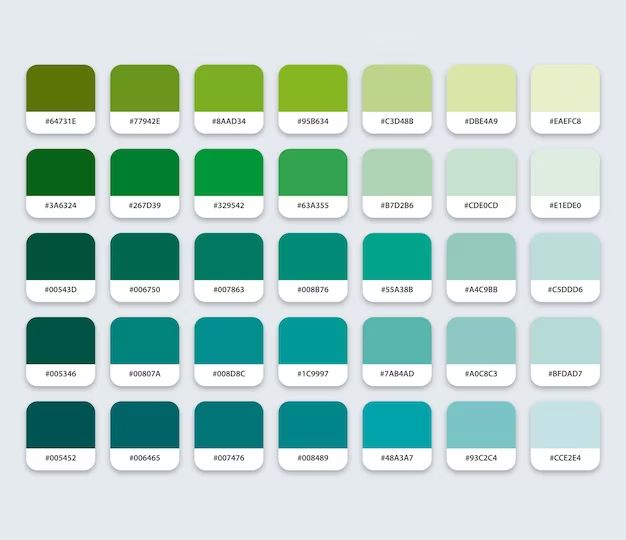Aquamarine is a beautiful light blue-green color that is quite unique. The name “aquamarine” comes from the Latin for “water” and “sea”, referring to its serene blue-green ocean-like hue. But is aquamarine actually green or blue? The answer is more complex than it may seem. In this article, we’ll examine the origins of aquamarine, its place on the color spectrum, and how it’s classified among colors.
The Origins and Composition of Aquamarine
Aquamarine is the blue to blue-green variety of the mineral beryl. Beryl is a colorless silicate mineral that takes on different hues when small amounts of elements such as iron, chromium, and vanadium are present. The trace amounts of iron is what gives aquamarine its signature blue-green color.
The more iron present in the beryl, the greener the aquamarine. Alternatively, the less iron, the bluer it becomes. The most prized aquamarine gems have a primary hue that is a tranquil blue with just a hint of green for added vibrance.
Where Aquamarine Falls on the Color Spectrum
The color spectrum is a continuous range of colors from violet to red. Within this full visible spectrum of color, aquamarine falls somewhere between blue and green:
| Violet | Blue | Green | Yellow | Orange | Red |
More specifically, its wavelength frequency lands at about 474-491 nm on the color spectrum. This positions aquamarine closer to blue than green. However, it still has obvious green undertones mixed in that separates it from a pure blue.
How Aquamarine is Classified
Color names and classifications can be somewhat subjective. However, aquamarine is generally considered to be a bluish-green color by most color experts.
| Color Family | Blue-Green |
| Closely Related Colors | Cyan, Turquoise, Teal |
It fits neatly under the umbrella of blue-green colors. Some also consider it to be a variety of cyan. It’s closely related to the cooler greenish-blue shades like turquoise and teal.
Aquamarine differs from emerald primarily by being a blue-green rather than a yellow-green. It also has a lighter, brighter, more cheerful appearance than emerald’s deeper, richer green tones.
How the Eye Perceives the Color
The way we perceive color is complex. Our eyes contain special photoreceptor cells called cones. There are three types of cones that receive and process different wavelengths of light.
The three cone types are:
| Cone Type | Detected Wavelengths |
| S cones (short) | Blues |
| M cones (medium) | Greens |
| L cones (long) | Reds |
When we look at aquamarine, the blue wavelengths activate our S cones, while the green wavelengths activate our M cones. Our brain then combines and interprets these signals as aquamarine.
This stimulation of both the blue and green color receptors in our eyes is why aquamarine is perceived as a blue-green color rather than just blue. The particular mix of blue and green wavelengths is what gives aquamarine its signature look.
Uses and Meaning of Aquamarine
The cooling blue-green tones of aquamarine have made it a popular gemstone and color choice. Here are some of its key uses and associated meanings:
– Jewelry – Aquamarine is a modern birthstone for March and is a popular engagement ring gem. It symbolizes harmony, friendship, and fidelity.
– Decor – Aquamarine is a soothing, tranquil color for home decor. It promotes relaxation and reflection.
– Fashion – Designers often use aquamarine in spring and summer collections for its fresh, oceanic vibe. It is occasionally seen in couture.
– Flags – The blue-green stripes on the flag of Brazil represent aquamarine gems found in the country.
– Uniforms – Aquamarine scrubs are used in some hospitals for their calming effect.
Conclusion
While aquamarine sits between blue and green on the color spectrum, it is considered a primarily blue-green color. The mix of blue and green wavelengths coming into our eyes is what gives aquamarine its cool, soothing blue-green appearance.
So in summary, aquamarine is neither strictly blue nor green, but it can be classified as a blue-green color that shares qualities of both. Its beauty comes from the balance of blue and green that gives aquamarine its refreshing oceanic charm.

